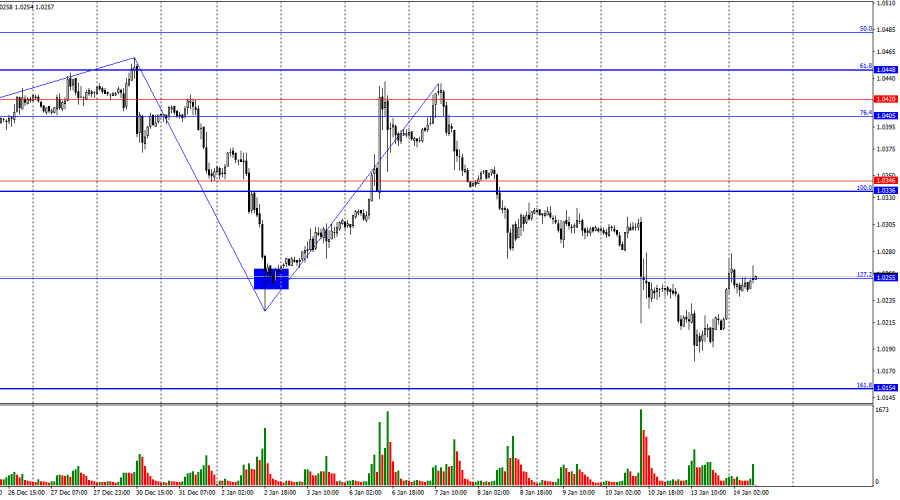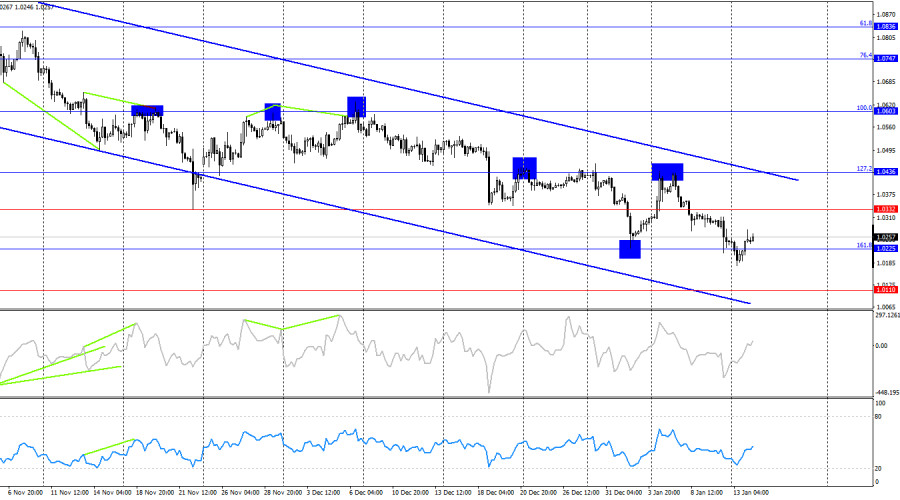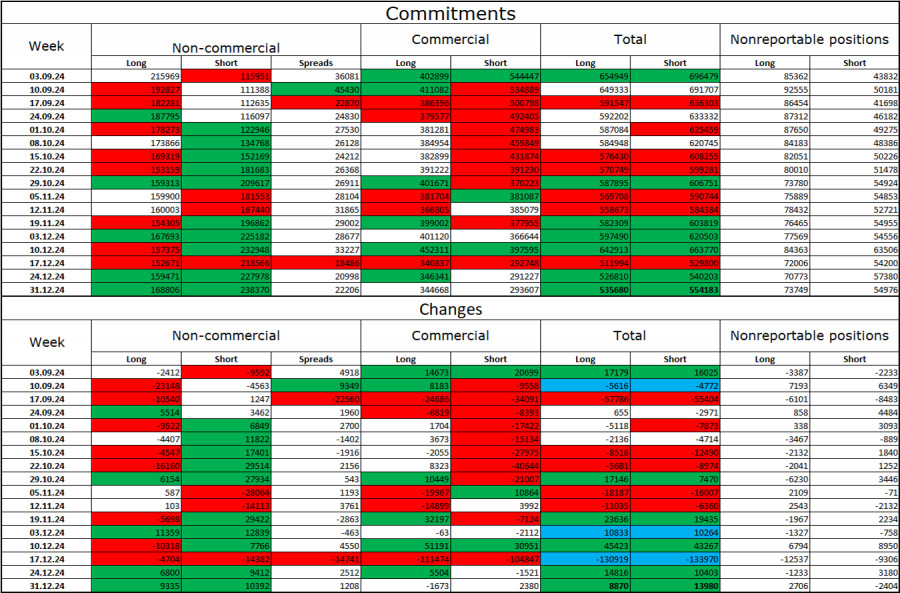See also


The wave situation remains clear. The last completed upward wave did not breach the peak of the previous wave, while the new downward wave has already twice broken the previous low. This indicates the continuation of a bearish trend, with no signs of reversal. A confirmed reversal would require a confident rise of the euro above 1.0460 and consolidation at this level, which seems unlikely in the near term.
Monday lacked significant news, but trading was highly active. Initially, the dollar continued to strengthen, consistent with the ongoing bearish trend. In the second half of the day, a pullback occurred, likely due to profit-taking. In other words, the dollar had no fundamental reason to fall, but traders occasionally close short positions to lock in gains, causing retracements.
Tuesday will bring the US inflation report—a highly anticipated event. If inflation falls below 2.8%, the dollar could extend Monday's decline. Lower inflation would imply that the Federal Reserve may not need to adjust its monetary policy plans for 2025. On January 20, Donald Trump's inauguration may also influence the market, as recent bearish activity could be linked to this factor. Post-inauguration, I expect the dollar to weaken further, depending on Trump's initial actions as president.
On the 4-hour chart, the pair has already rebounded twice from the 127.2% corrective level at 1.0436 and consolidated below 1.0332. If sellers can push the pair below the 161.8% level at 1.0225 for the second time, the next target will likely be 1.0110. The downward trend channel clearly reflects current market sentiment. Without a breakout above this channel, significant euro growth is unlikely. No emerging divergences are observed today.
The latest COT report indicates that speculators opened 9,335 long positions and 10,392 short positions during the last reporting week. Sentiment among the Non-commercial group remains bearish and is strengthening, suggesting further declines in the pair. Total long positions held by speculators are now at 168,000, compared to 238,000 short positions.
For 16 consecutive weeks, major players have been reducing positions in the euro. This underscores an ongoing bearish trend without exceptions. While occasional weekly dominance by bulls occurs, it is more of an anomaly. The primary driver for the dollar's recent weakness—expectations of FOMC policy easing—has been fully priced in. Unless new factors emerge, the dollar's growth remains the more likely scenario. Technical analysis also supports a continued long-term bearish trend for EUR/USD.
The January 14 economic calendar includes only one minor entry, suggesting weak influence from the news cycle on market sentiment.
Fibonacci Levels:
You have already liked this post today
*The market analysis posted here is meant to increase your awareness, but not to give instructions to make a trade.


InstaTrade
video analytics

Your IP address shows that you are currently located in the USA. If you are a resident of the United States, you are prohibited from using the services of InstaFintech Group including online trading, online transfers, deposit/withdrawal of funds, etc.
If you think you are seeing this message by mistake and your location is not the US, kindly proceed to the website. Otherwise, you must leave the website in order to comply with government restrictions.
Why does your IP address show your location as the USA?
Please confirm whether you are a US resident or not by clicking the relevant button below. If you choose the wrong option, being a US resident, you will not be able to open an account with InstaTrade anyway.
We are sorry for any inconvenience caused by this message.



